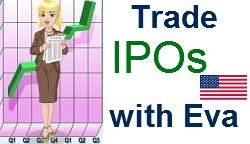

Burlington’s offering is part of the 160 U.S. listed IPOs so far this year, a six-year high, according to Dealogic.
“We are pleased with it, said Chief Executive Tom Kingsbury in an interview. “It’s very exciting that our story and transformation has really resonated with investors.”
It’s also good news for Bain Capital, which took the company private in 2006 and will retain a 75% stake after the IPO.
Burlington competes in a so-called off-price retail space and counts among rivals T.J. Maxx parent TJX Cos. TJX and Ross Stores Inc. ROST The sector has consistently outperformed the retail industry average built around a strategy of buying excess in-season goods from manufacturers and selling name brand items at a discount.
The off-price apparel channel’s sales have grown over 10 times faster than department stores and other national chains, the company said in a filing, quoting research firm NPD Group.
TJX and Ross Stores, for instance, have both seen their shares about quadrupled in the past five years, compared with S&P 500′s 45% increase. TJX, approaching $27 billion in sales, is even bigger than Gap Inc. GPS in the apparel space.
While many retailers have reported disappointing first-half sales, Burlington posted a 5.5% comparable store gain, including a 7.8% increase in the second quarter. Kingsbury said same-store sales have risen in 11 of the past 14 quarters. Its total revenue rose 13% to $4.17 billion in the year ended Feb. 2 from $3.7 billion in fiscal year 2011. It returned to a profit of $25.3 million last year from a loss the previous year.
Kingsbury said the Burlington, New Jersey-based company has grown in recent years by enhancing its “treasure-hunt” environment at stores to excite demand, and buying more in-season merchandise from its 3,500 vendors. It differentiates from its rivals with an 80,000 square-foot average store size that’s two to three times bigger than its main rivals, which allows it to feature a baby gear section, a year-round coat business — about 8% of its total — and a men’s tailored business, he said.
The company plans to add 25 stores each year and sees the market supporting at least 1,000 stores. Kingsbury, however, said new store average size has dropped to near 60,000 square feet. Over 98% of its stores are profitable on a store-level cash flow basis, the company said, adding it has “considerable room to grow profitability.”

No comments:
Post a Comment